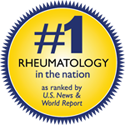I recently took four short courses of steroids between Sept. 06 and Apr. 07. In May/june, I developed lower back and thigh pain. An xray of the hip revealed (according to radiologist’s reading) abormalities in both hips and severe avascular necrosis A subsequent bone scan and MRI, however revealed no evidence of AVN, though it said there was coxa magna etc and abnormalities in both femoral heads most likely due to Perthes. I took the films to an orthapedist who said the damage was old and most likely old Legg-Calve Perthes. I am 48 year old female with no memory of any problems in childhood at all. Can I be sure that there is not current AVN, given that this was first time in my life I took steroids? Can any good orthapedist (this one specializes in hips, knees and trained at Johns Hopkins I believe) say with certainty that there is no current problem based upon xray, mri and physical exam? Is there something specific in the films that can determine that this was an old problem and not a current one from the taking of steroids (regardless of dosage). Knowing the importance of catching AVN early, I wonder whether a second opinion is necessary. Are such discrepancies between xray and mri common in AVN and Legg Perthes?
Osteonecrosis Q & A
Lupus and AVN
I am 48yo, hispanic decent woman diagnosed with SLE 8 years ago. Recently, my left shoulder has dropped and more painful than previous. Ortho doctor has suggested I have a “frozen shoulder”, but more probably AVN. I cannot have an MRI for diagnosis because of spinal fusion appliances. I understand there is a connection between Lupus and AVN. What is AVN? He recommended complete shoulder replacement, but because of constant flairs of Lupus, (pleurisy and kidney) I have waited nearly one year. Currently, on NO meds for lupus because I have reacted to everything (Celebrex, Vioxx cause my kidney’s to bleed) Plaquenil had no effect (on for 2 1/2 years) low dose steroids cause an allegic reaction. I currently take dilaudid for pain management, but it is not helping. I do not have a rheumatologist – doctors in my area (Florida) are not taking new Medicare patients. I am stuck. Any information you can give me would be appreciated. I would love to come to MD, but can not afford the trip, and the nearest teaching hospital to me is Gainesville (a 5 hour trip I can not make because of discomfort).
Use of Prednisone
I have RA which at present is uncontrolled. I have been on SSZ which put the RA into semi remission for a couple of years and then failed. I have been taking MTX/SSZ/HCQ for 18 months now with no result. My RD has suggested gold with a 6 week course of 7 mg daily prednisone, but I also have what appears to be idiopathic AVN of the left hip. I am worried about taking the prednisone because of the possibility of more avn. Is my worry justified ? I would also like to get my hip fixed asap (a THR)but the orthopedic sugeon has agreed that it would best to get the RA under control first.
MEDICATION complications
I am writing to try to help my friend’s wife and don’t have all the exact clinical details but have the basic info. She was healthy 26 yrs old after birth 2nd child was diagnosed with severe RA. She has been on meds past two years that includes Methotrxate possibly steroids. Now we just got a frantic call from her husband. seems either the meds or disease has destroyed her hip joints. they are being told there is a decreased blood supply to her hips and now MD is recommended surgery for total hip replacement(S). I am trying to get more detailed info. Unfortunately our friend is overseas in Iran so I don’ think they have the most reason medical technology like here. Is this normal to need new hips so soon has only been on meds two years. They are trying to get second opinions in their country as well. Please any advice appreciated.
Avascular Necrosis
I am having difficulty finding extensive information concerning AVN. I have had the arthritis in both ankles for which I now have a right ankle fusion and a left total ankle replacement done by Sigvard Hansen at Seattle’s Harborview Med. Center. I now find that the AVN has spread to both of my hips. Can I expect to require hip replacements and maybe even knees or wrists later? Also, my oldest daughter has been diagnosed with AVN of both of her ankles. Is AVN hereditary? Is there a cure? Maybe gene therapy?
What is Osteocrenosis?
My son was just diagnosed with this he is 13 years old. The doctor said he just wants to wait and see if his ankle heals on its own Do you think I should insist that something be done now? How serious is this?
